The sale of the 31.68-carat, sunset-hued stone was part of Sotheby’s first series of events and auctions in Abu Dhabi.
New Survey Findings Echo Idea of ‘Fewer, Better Things’
The Diamond Producers Association commissioned the survey, which polled nearly 1,000 women ages 18 to 34.

New York--Survey results recently released by the Diamond Producers Association show that millennials are interested in having fewer possessions that are worth more, consider diamond jewelry an investment and don’t like fakes.
The DPA, the association behind the new “Real is Rare” campaign to promote mined diamonds, commissioned New York-headquartered strategy consultancy Kelton Research to conduct the study about millennial women’s preferences when it comes to luxury goods.
Kelton surveyed 995 women ages 18 to 34 online between July 10 and 14, with a margin of error of +/- 3 percent.
One of the key findings from the study was that 94 percent of the highest-earning millennials (annual income of $150,000 a year or more) surveyed said they would prefer one more expensive item that is “genuine” over numerous cheaper items.
This finding is reminiscent of the “fewer, better things” marketing campaign De Beers rolled out for the 2008 holiday season in the midst of the global financial crisis.
Here are three more key findings from the survey.
--The millennial women surveyed view diamond jewelry as an investment. Of those women surveyed, 75 percent said they view diamond jewelry as an investment in themselves, while 82 percent see it as a long-term investment. Among millennials who earn $150,000+ a year, these figures climb to 94 percent and 91 percent, respectively.
The DPA said these survey results help support De Beers’s recent study, which showed that the number of women who buy diamond jewelry for themselves has increased by 50 percent in the last 10 years. De Beers created its fourth-quarter marketing campaign for Forevermark with these findings in mind.
--They don’t want knockoffs. Eighty-five percent of women said they would be embarrassed if they knew that the luxury item they had purchased was a fake.
-- Women of the millennial generation see luxury goods as an expression of self-confidence. Two out of three, or 66 percent, of the women surveyed say they feel more confident in themselves when wearing diamond jewelry.
Commenting on the results, DPA Chief Marketing Officer Deborah Marquardt said: “When evaluating luxury purchases, they (millennials) seek items that are genuine, unique and not mass-produced, and have inherent meaning and value.”
The Diamond Producers Association launched “Real is Rare” in late 2016. It was intended to fill the void left by the absence of the generic diamond marketing campaigns once done by De Beers (e.g., A Diamond is Forever).
The DPA is comprised of
They allotted $57 million for the “Real is Rare” campaign in 2017, with $50 million being spent in the United States and remaining $7 million going to expand the campaign into China and India.
The Latest

Most customers who walk into your store this month have made up their minds. Your job is to validate their choice, Emmanuel Raheb writes.

The collection features characters and motifs from Ukrainian folklore, including an enchanted mirror and a magic egg.

How Jewelers of America’s 20 Under 40 are leading to ensure a brighter future for the jewelry industry.

MatrixGold 3.11, the newest version of the jewelry design program, offers more flexibility, precision, and creative control.


The pavilion will be part of the 2026 JA New York Spring show, scheduled for March 15 to 17.

Kadet, a 1994 National Jeweler Retailer Hall of Fame inductee, helped grow the family-owned retailer in the Chicago area and beyond.

Roseco’s 704-page catalog showcases new lab-grown diamonds, findings, tools & more—available in print or interactive digital editions.
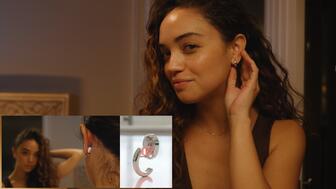
Billed as the world’s smallest wearable, Lumia Health’s new smart earrings have a health tracker subtly embedded in the back.
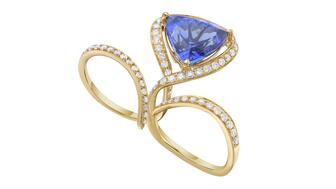
Don’t let those with December birthdays feel blue. Help them celebrate their month with blue zircon, turquoise, and tanzanite.

The new pink sapphire version of the piece dances with its wearer in the brand’s “Icons After Dark” holiday campaign.

A choice that’s generated a lot of commentary, Pantone says “Cloud Dancer” marks a fresh start and encourages relaxation and creativity.

The manufacturer’s holiday campaign features a gift guide filled with trending designs and jewelry that can be personalized.
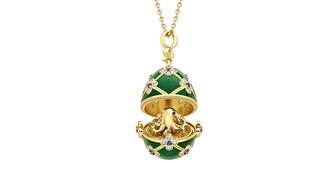
The man was charged with theft, accused of ingesting the necklace while in a jewelry store in Auckland, New Zealand.

The Florida independent expanded its store from 8,000 to 14,000 square feet, fulfilling the vision of its late co-founder, Jim Dunn.
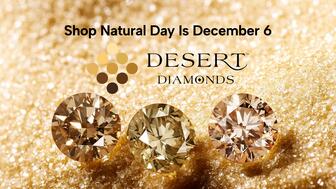
Sponsored by De Beers Group

The classic 5600 series G-Shock has been scaled down to about a tenth of its size, becoming a fully functioning watch ring.

The association’s annual conference and gala will take place Feb. 4, 2026, during the Tucson gem shows.

The January show will include a workshop for jewelry retailers on implementing AI to strengthen their businesses.
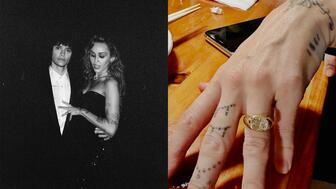
Fellow musician Maxx Morando proposed to the star with a chunky, cushion-cut diamond ring designed by Jacquie Aiche.

The retailer, which sells billions in fine jewelry and watches, is suing the Trump administration and U.S. Customs and Border Patrol.
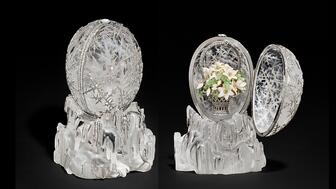
The historic egg, crafted for Russia's ruling family prior to the revolution, was the star of Christie’s recent auction of works by Fabergé.

The retailer offered more fashion jewelry priced under $1,000, including lab-grown diamond and men’s jewelry.

The eau de parfum is held in a fluted glass bottle that mirrors the decor of the brand’s atelier, and its cap is a nod to its “Sloan” ring.

Vivek Gadodia and Juan Kemp, who’ve been serving as interim co-CEOs since February, will continue to lead the diamond mining company.

In addition, a slate of new officers and trustees were appointed to the board.
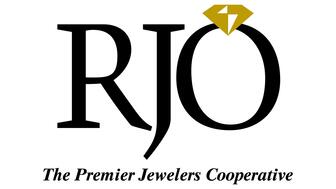
Witt’s Jewelry in Wayne, Nebraska, is the organization’s new milestone member.



























